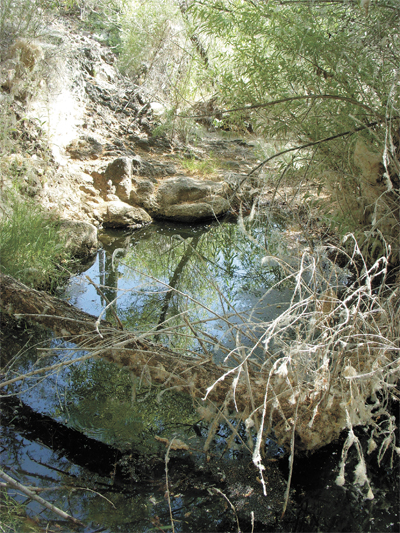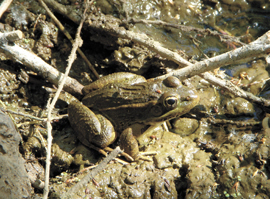Cahava Springs takes preservation to next level
By Curtis Riggs | September 10, 2008
Conservancy group already formed
CAVE CREEK – Mark Stapp is an atypical developer and his new Cahava Springs project going in on 945 acres in the western part of town is an atypical development.
The Cahava Springs project is unique because the Cahava Springs Conservancy was formed as the road to the site and the associated infrastructure were being established. The conservancy is dedicating its effort to studying 130 acres around the Apache Springs riparian area to examine the ecology, wildlife and history of life around the water, which people have been coming to and using for approximately 1,000 years.
Cahava Springs, lying just south of Spur Cross Ranch where the Hohokams had a thriving civilization a millennium or more ago, has factored into its use by many different peoples over the years.
 The 130-acre nature preserve around Apache Springs will be preserved forever as part of the Cahava Springs project. Stapp also gave 80 acres at Cahava Springs to the Town of Cave Creek to create a land bridge between the Spur Cross Ranch Conservation Area and the Cave Creek Recreation Area, which lies to the south.
The 130-acre nature preserve around Apache Springs will be preserved forever as part of the Cahava Springs project. Stapp also gave 80 acres at Cahava Springs to the Town of Cave Creek to create a land bridge between the Spur Cross Ranch Conservation Area and the Cave Creek Recreation Area, which lies to the south.
“In the last five years the industry has focused itself on environmentally responsible development. We had been pursuing that long before it became popular,” Stapp said about his company, Pyramid Community Developers.
Only 230 lots will be established at Cahava Springs, which means that over 80 percent of the property will be preserved forever.
Stapp points out his goals and aspirations “match up nicely with Cave Creek values and where the market wants to be now.”
He said Cave Creek “was previously seen as an extreme group” on preservation matters.
“That is no longer the case,” he added.
 Conservancy Executive Director Beth Vershure said the efforts to study the riparian area involve taking measurements and determining elevations now as a way of creating a baseline study for Apache Springs. There is also a study of wildlife including many different species of butterflies.
Conservancy Executive Director Beth Vershure said the efforts to study the riparian area involve taking measurements and determining elevations now as a way of creating a baseline study for Apache Springs. There is also a study of wildlife including many different species of butterflies.
The group intends to create a series of check dams along the wash leading to and from Apache Springs as a way of extending the riparian area. Vershure said Arizona State University is interested in the study of how water runoff can change with a development, also part of the Conservancy’s work.
Stapp is pleased about a cultural resources study of the history of the Hohokams, the U.S. Cavalry’s involvement in the area, which lead to the establishment of Cave Creek as a town and other historic aspects of the property. Portions of the old Military Road, which directly led to the founding of Cave Creek, were found on a mesa at Cahava Springs during a cultural inventory of the property.
The bulk of the conservancy’s work will be finished in the next eight to 10 months to coincide with the completion of the entry road to the project and the underground utilities.
Mark Hazelton of Russ Lyon Realty is marketing the lots at Cahava Springs. He said the real estate public report for the property should be available in the next two months.
Top photo: Protection of the Apache Springs riparian area is the focus of the Cahava Springs Conservancy.
Lower photo: Lowland leopard frog.
Courtesy photos/ Mike Rigney
